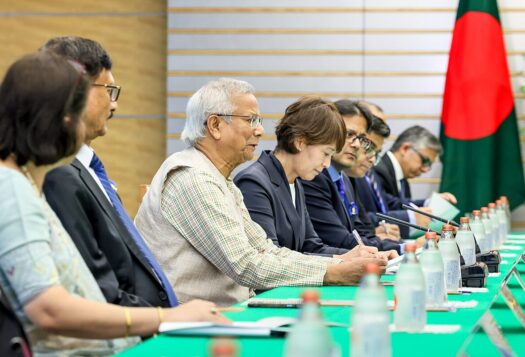
After a month of closure, the Pakistan-Afghanistan border finally reopened last week. Reacting to major attacks in Pakistan recently, in which over 120 people were killed and for many of which Pakistan blamed Afghanistan-based Jamaat-ul-Ahrar (JuA), offshoot of Tehreek-e-Taliban Pakistan (TTP), Islamabad had closed the border with its eastern neighbor in mid-February. Since the launch on the 2014 military operation Zarb-e-Azb in the Federally Administered Tribal Areas (FATA), various events have shaped the contours of Pakistani border strategy. Traditionally, Pakistan followed an ‘open border policy’ with Afghanistan, as a result of which millions of Afghans migrated to Pakistan after the Soviet invasion began in 1979, and in 2002, many Taliban fighters also fled to Pakistan. However, recent frequent incidents of border closing may signify an important strategic shift in Af-Pak relations. This change in strategy seems to be intended to help Pakistan consolidate power along the Durand Line and weaken Afghanistan’s claim on Pashtun-dominated areas in the long run.
The Af-Pak Border: Why it Matters to Pakistan
Economics
Border issues between Afghanistan and Pakistan date back to the demarcation of the Durand Line by Sir Durand in 1896, which Afghanistan does not recognize as the international border. However, recent developments point towards Pakistani efforts to attain a long-term, credible solution for its border issues with Afghanistan. The timeline for strengthening border management and bringing ungoverned tribal areas into legal jurisdiction indicates that Pakistan wants to settle this issue before new international projects such as the Turkmenistan Afghanistan Pakistan India (TAPI) gas pipeline, CASA-1000 electricity project, and the Chinese One Belt One Road (OBOR) become reality. It is also seems to be critical for Pakistan to settle the issue before the Afghan National Army (ANA) becomes a force to reckon with in the neighbourhood, so that it doesn’t face fierce resistance. Solving the border issue will lend legitimacy to Pakistan and ease international concerns about the security of these projects.
Security
One year after launching Operation Zarb-e-Azb, the Pakistani government formed a six-member FATA reforms committee to explore options for consolidating gains made by establishing a proper administrative structure in the region where hundreds of thousands of Afghan refugees live. In fact, Adviser to the Prime Minister Sartaj Aziz asserted that FATA “could no longer be retained as ‘a buffer against foreign aggression.’” Last September, the Pakistani authorities announced that they were building more gates on the Pak-Afghan border to aid in border management. Since 2014, Pakistan’s National Database and Registration Authority (NADRA) has de-registered thousands of Afghans from the database and declared them illegal migrants and forcefully repatriated 365,000 in the second half of 2016. Given the background of these developments, frequent border closures appear to be directed to reinforce the authority of the Pakistani administration, deny Afghan claims on these areas, and thus reject the idea of Greater Pashtunistan.
It is believed that Zarb-e-Azb forced most of the anti-Pakistan elements to crossover to the Afghan side of the Durand line while at the same time internally displacing different tribes from Bajaur, Mohmand, Khyber, Kurram, Orakazai and South-North Waziristan. Following this, the Pakistani army strategically sanitized this geographically-difficult terrain to get rid of anti-Pakistani groups or so-called “bad terrorist” groups. However, the “good terrorists” such as the Haqqani Network continue to operate from these areas.

Implications
Afghanistan is a relatively weak state and frequent border closures hamper trade, further weakening the landlocked country. In this regard, Pakistan has the capability to inflict great damage to Afghanistan, arguably more than any other state or non-state actor.
Afghanistan and Pakistan signed a bilateral transit trade agreement in 2010, and in 2016, the trade volume between the two countries stood at $2.28 billion annually. However, officials have been forced to downgrade the annual trade target of $2 billion to $1.5 billion. During the recent incident of border closure, more that 2000 trucks were waiting at the crossing for a month, and the daily loss of trade between the two countries accounted for around $4 million.
Afghanistan is exploring new markets for its goods as well as for imports. For example, Afghanistan imported $2.8 billion worth of goods from Iran, and over the past few years, Kazakhstan has replaced Pakistan as the biggest source of Afghanistan’s flour import. However, Afghanistan is still heavily dependent on Pakistan for imports (some estimates suggest 40 percent) and repeated border closures during harvest time and increased taxes are affecting the country—this is especially true of southern Afghan provinces of Helmand and Kandahar, famous for producing perishable pomegranates and grapes. Consequently, it appears that border closures have become one of the reasons that many farmers in these areas have gone back to poppy cultivation, which may be evidenced by an increase in opium production over the last few years. This may be helping the resurgence of the Taliban in the region.
Challenges for Pakistan
Deploying a large force and fencing the borders does not necessarily translate in securing the borders. There are roughly 200 entry-exit points along the Pakistan-Afghan border and given the difficult terrain, the Pakistan Army’s capabilities of manning a more than 2,000 km long border, also come into question. Moreover, the frequent attacks across Pakistan prove that the logistical bases of terrorist groups already exist within the country and not solely across the border. Thus, many of the Pakistani political commentators have termed the closures an “unwise” policy; however, the establishment and army have taken this decision as an enforcement of their “sovereign right.”
Conclusion
The frequent incidents of border closings could be part of a larger Pakistani strategy of consolidating authority over peripheral areas and weakening Afghanistan. In addition, as FATA reforms move forward, it will further strengthen Pakistan’s hold on the border and allow it more room to focus on internal issues.
***
Image 1: Getty Images, AFP
Image 2: U.S. Army


